The best base layers: the foundation of your hiking garb
The best base layers, from merino and bamboo to synthetic and hybrid tops, to keep you warm on your adventures – tested by experts
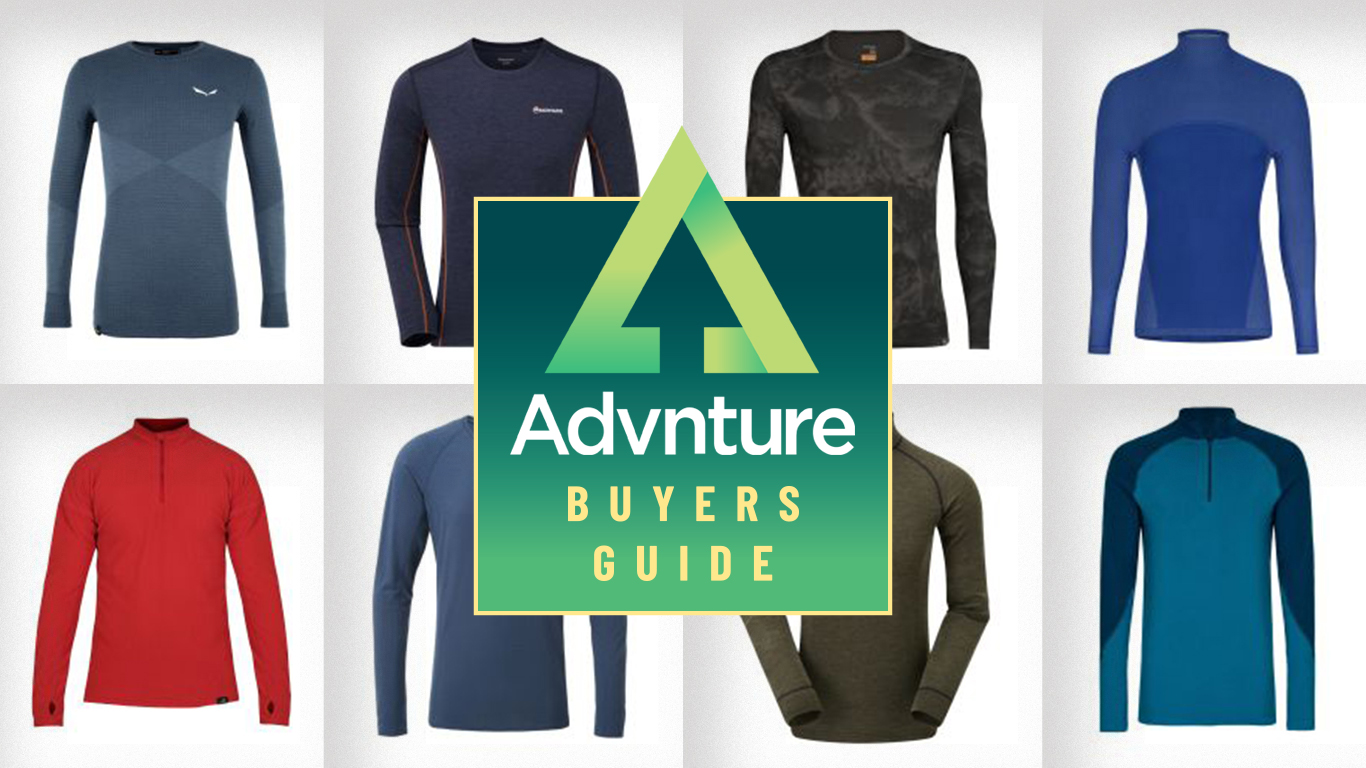
As the foundation of your layering system, the best base layers provide comfort and warmth during harsh conditions and can also be worn solo when the weather heats up. A base layer is worn next to your skin, so it's important that your base layer feels comfortable, manages your temperature effectively, wicks moisture away and moves with you.
Many of the best base layers are made from natural materials, such as Merino wool or bamboo, or are created using synthetic materials, usually polyester. Hybrids are very common too, combining the insulation of something like Merino with the fast drying qualities of polyester and the stretchiness of elastane.
We've ventured into all kinds of conditions to bring you this definitive guide to the best base layers available in 2025. The Icebreaker 200 Oasis Long Sleeve Crewe Thermal Top is our highest rated base layer here. Its Merino wool content makes it super comfortable and the performance is second to none. We kick things off with this and other Merino tops, before moving on to blended options, synthetic tops and bamboo base layers.
The quick list
This is our quick list, a brief overview of the best base layers available. To delve deeper into the specifics of each garment, see our more detailed reviews further down the page in this guide.
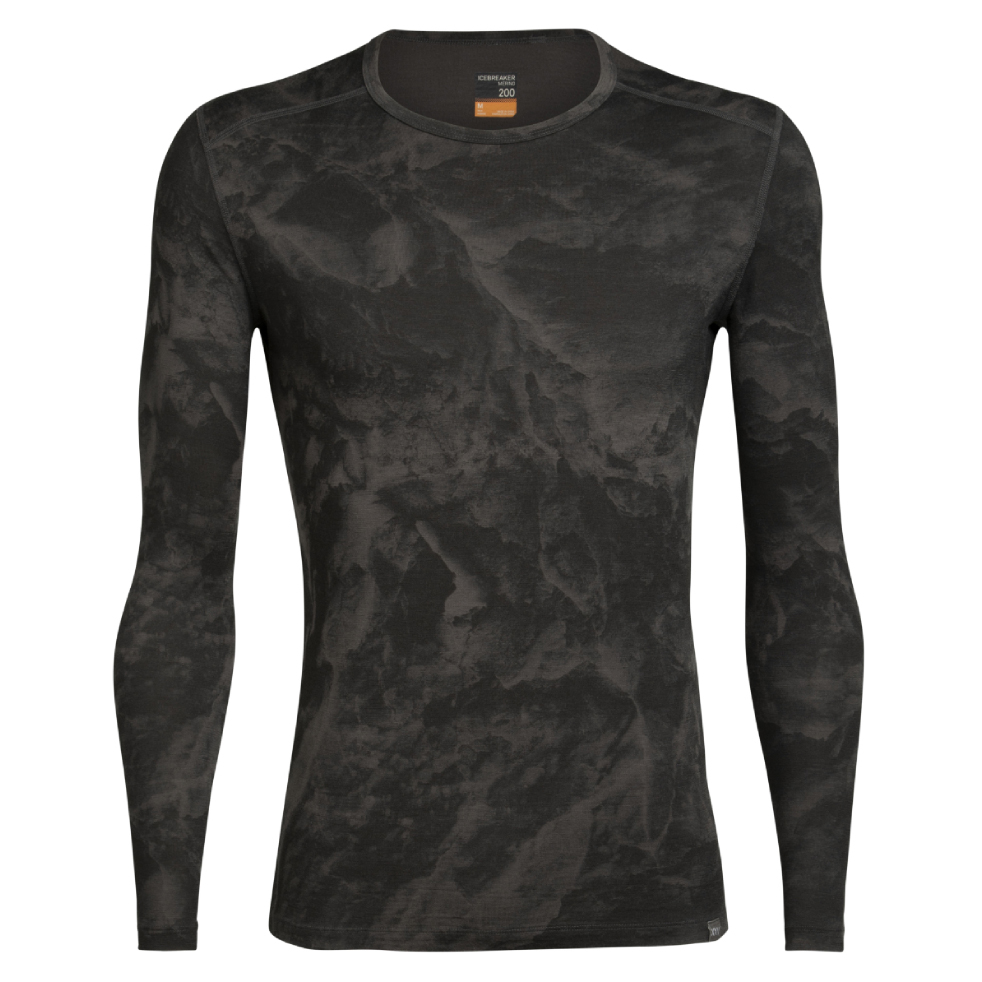
Made from 100% Merino wool, the Icebreaker 200 Oasis Long Sleeve Crewe Thermal Top is naturally antimicrobial, high-performing and odor-resistant.
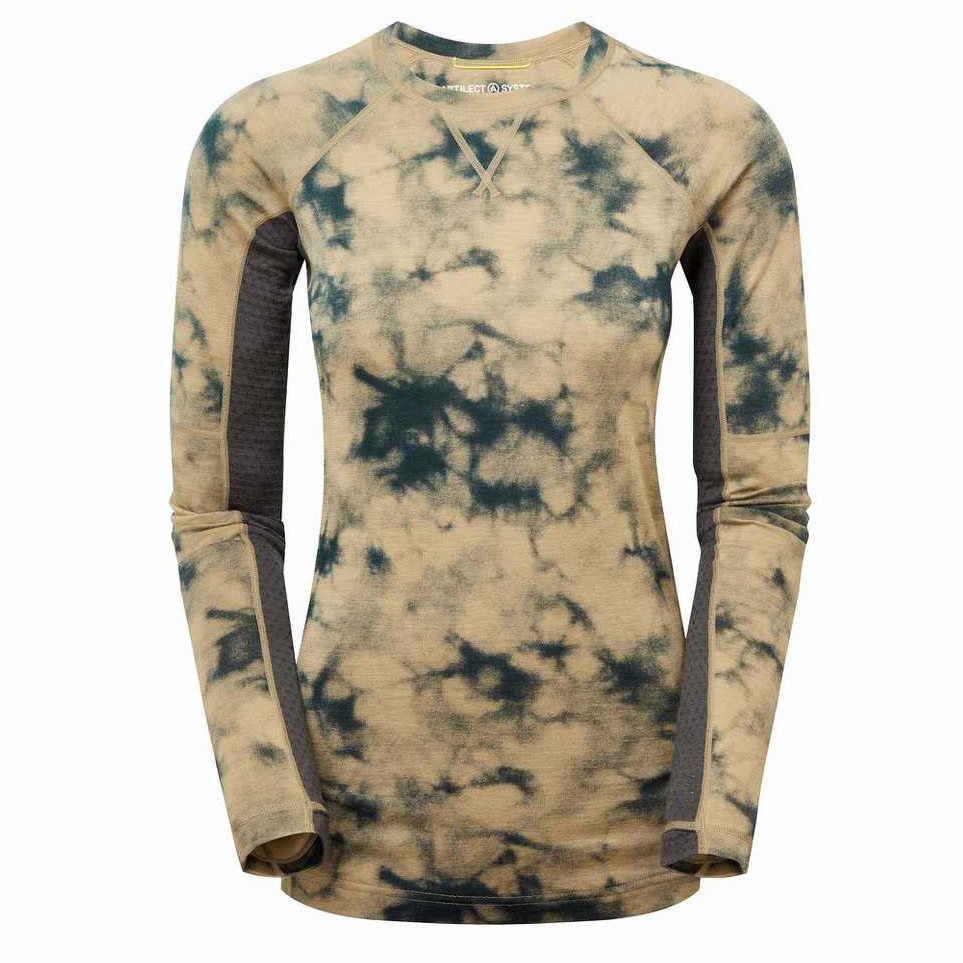
The fun looks of the Artilect W-Flatiron 185 Crew Td Tie Dye are complemented by excellent thermal properties and a gorgeously soft fabric. It's also available in a plain version
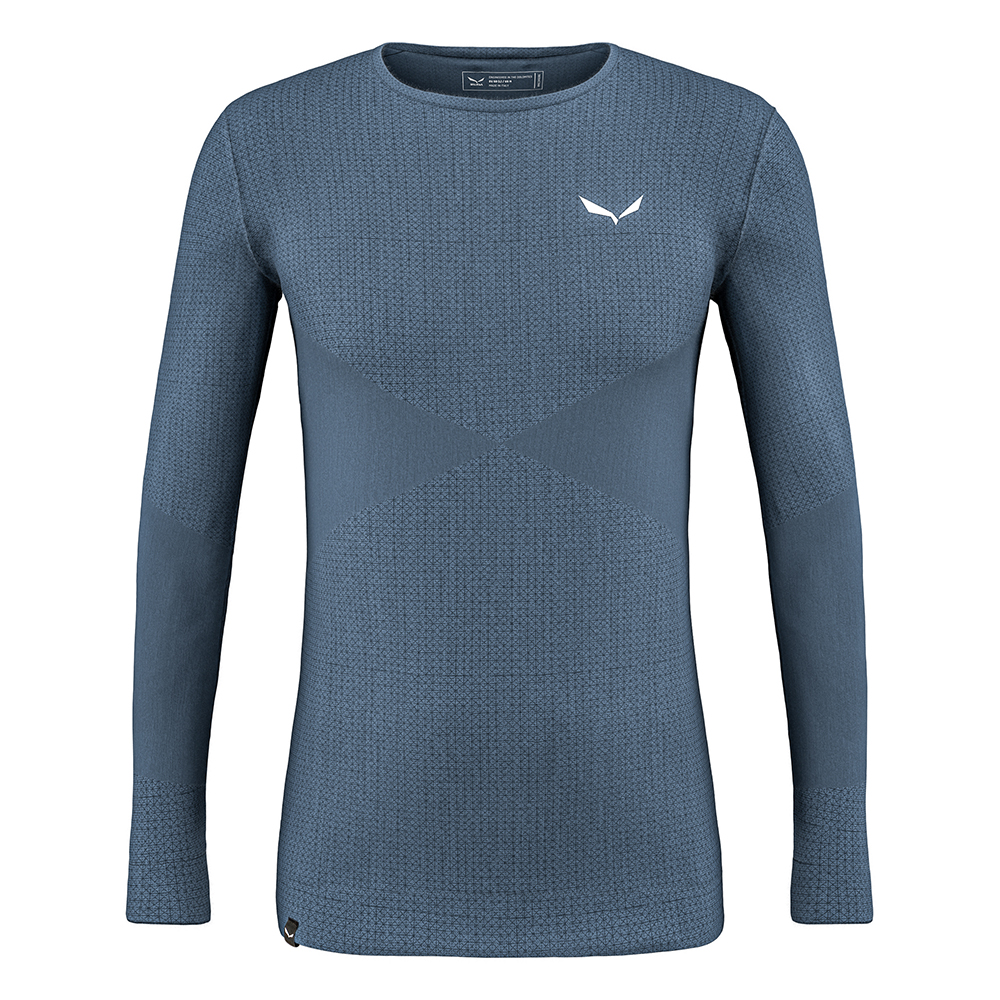
With a figure-hugging design, the Salewa Zebru Responsive Long-Sleeve Top has plenty of stretch, flat-locked seams and excellent performance on the trails
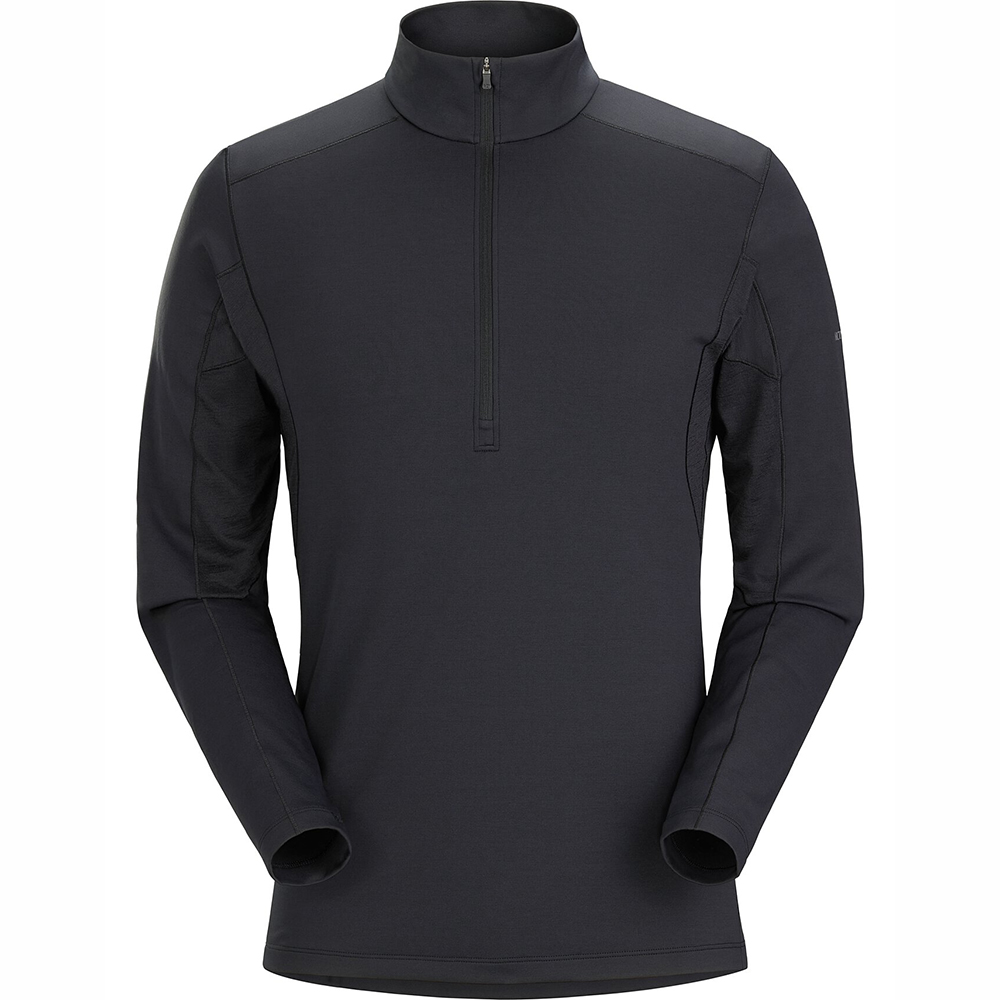
The Arc’teryx Rho Hybrid Half Zip Baselayer offers all the benefits of moisture-wicking polyester with a merino-blend underarm that ensures you stay odor-free, all in a cosy but not-too-tight fit.
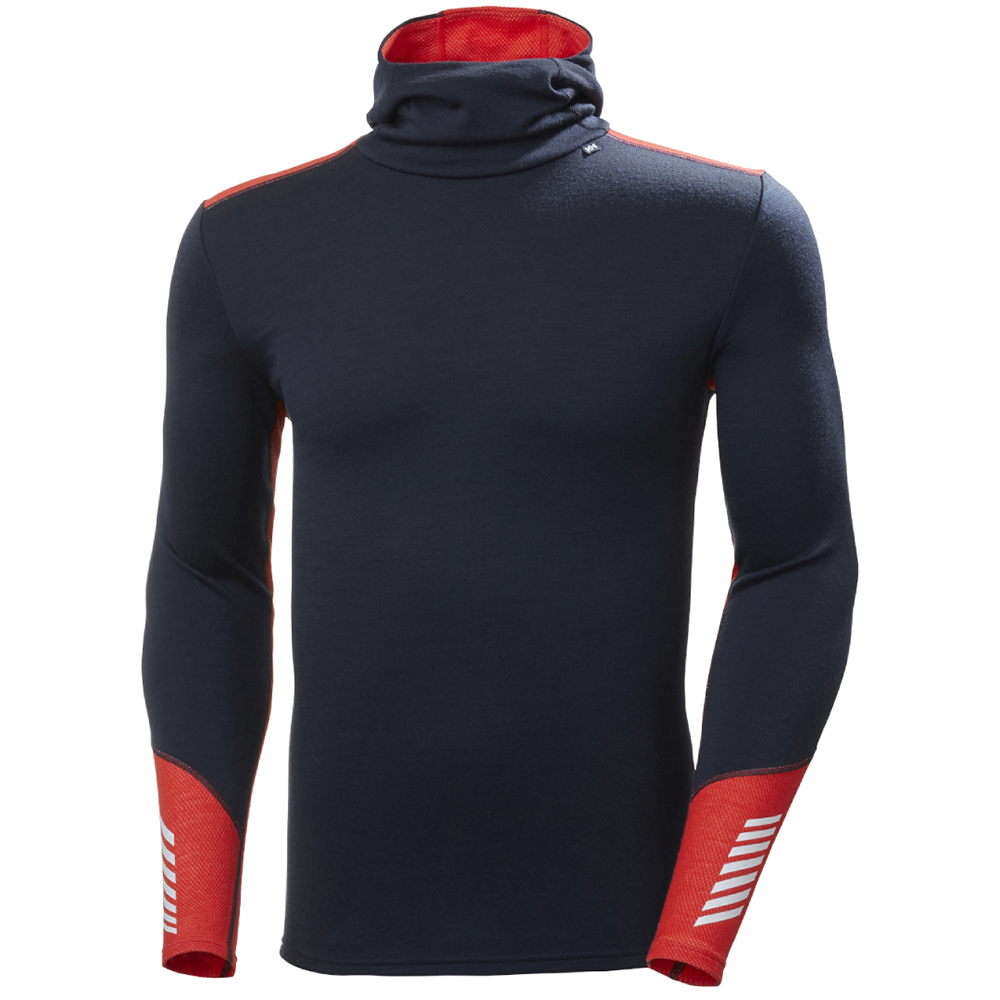
The Helly Hansen Lifa Merino Mid-weight Hoodie is great value for the performance level provided, giving superb warmth in the coldest weather, even when wet
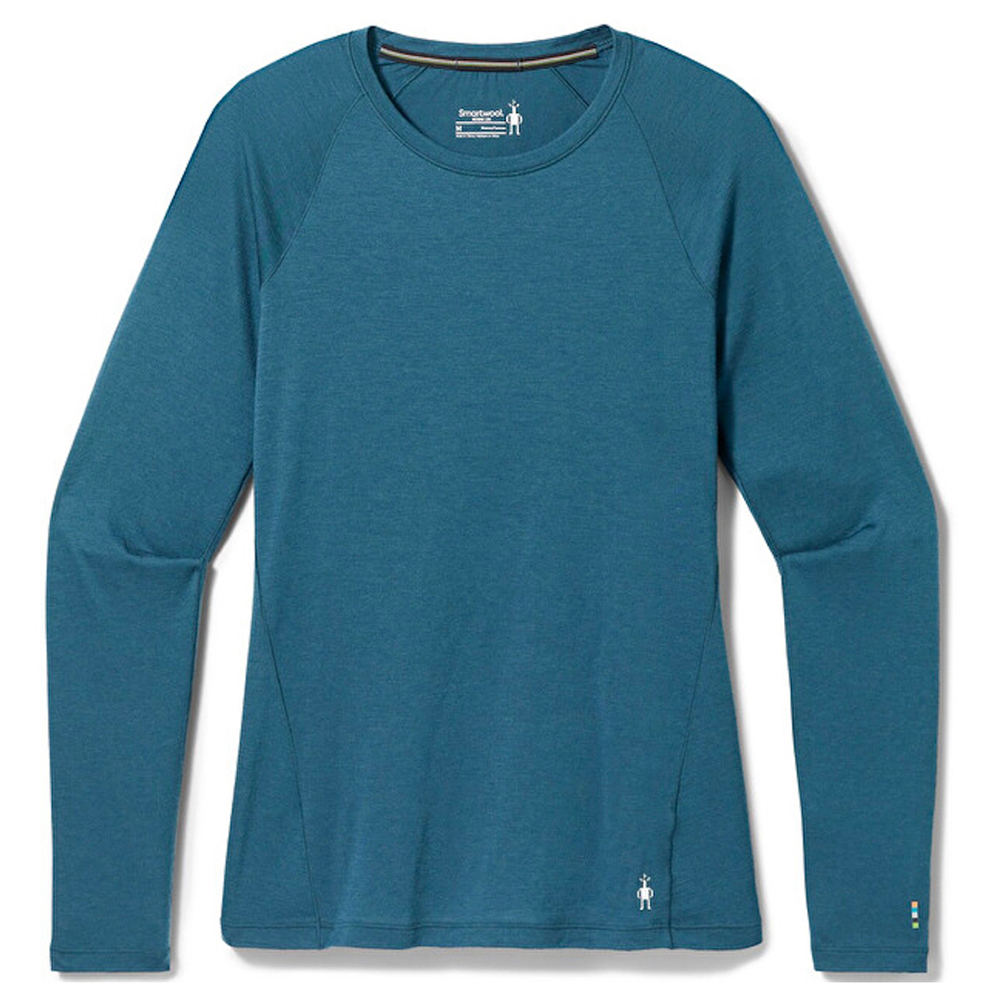
The ultra-breathable Smartwool Women’s Merino Sport Long Sleeve top is lightweight, comfortable and warm, and our tester enjoyed wearing it as a mid-layer on all-day hikes
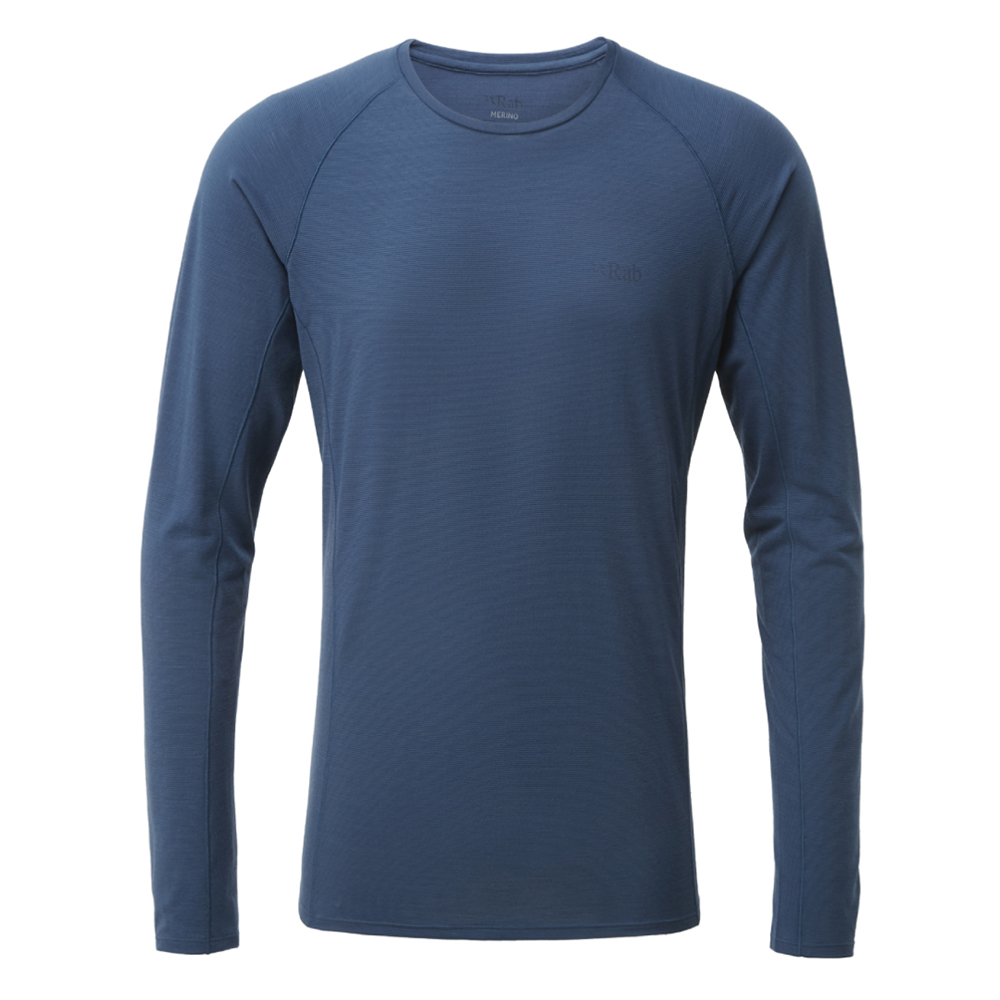
The Rab Forge Long-sleeved Tee is a lightweight, high-performing base layer that will keep you warm on the trails through winter, even when wet.
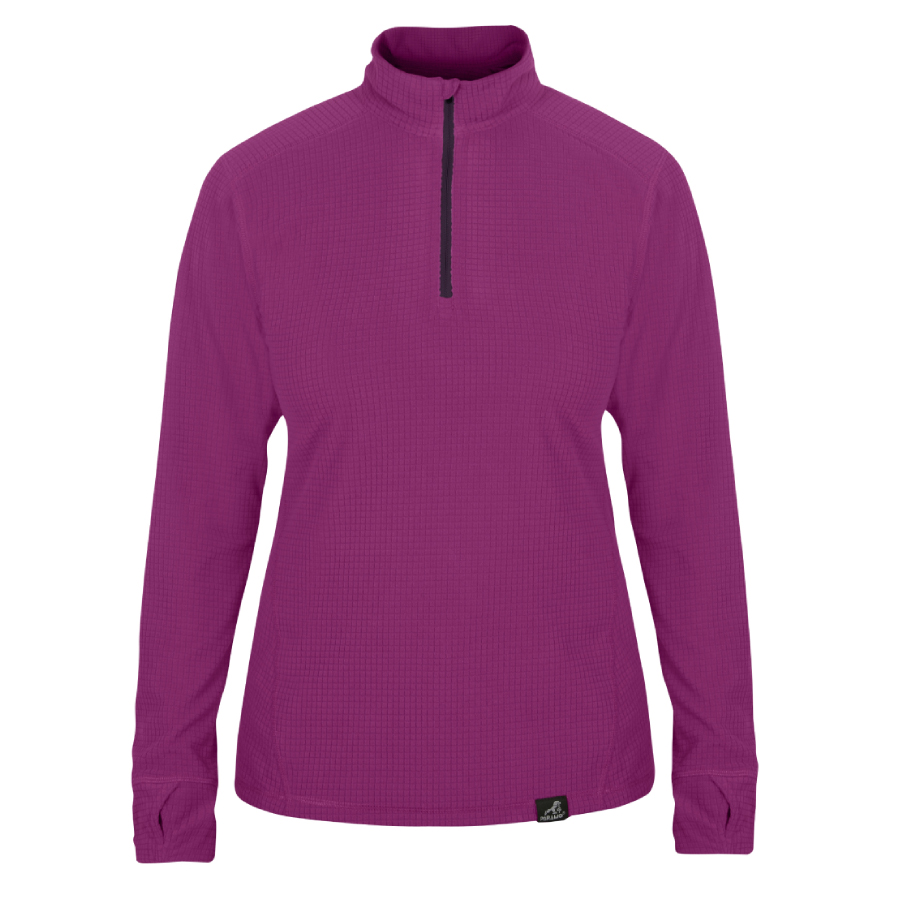
The Páramo Grid Technic Base Layer has a high neck, thumb loops and a lower-cut back to keep warmth inside, and is warm, comfortable and fully recyclable.
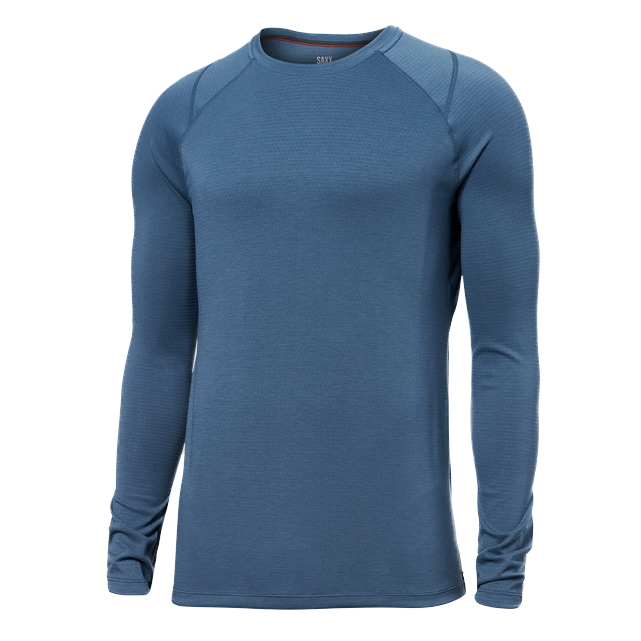
Comfortable, warm and functional, the Saxx Roast Master Mid-Weight Long Sleeve is a versatile base layer made from recycled synthetics and sustainable wood-based fibers.
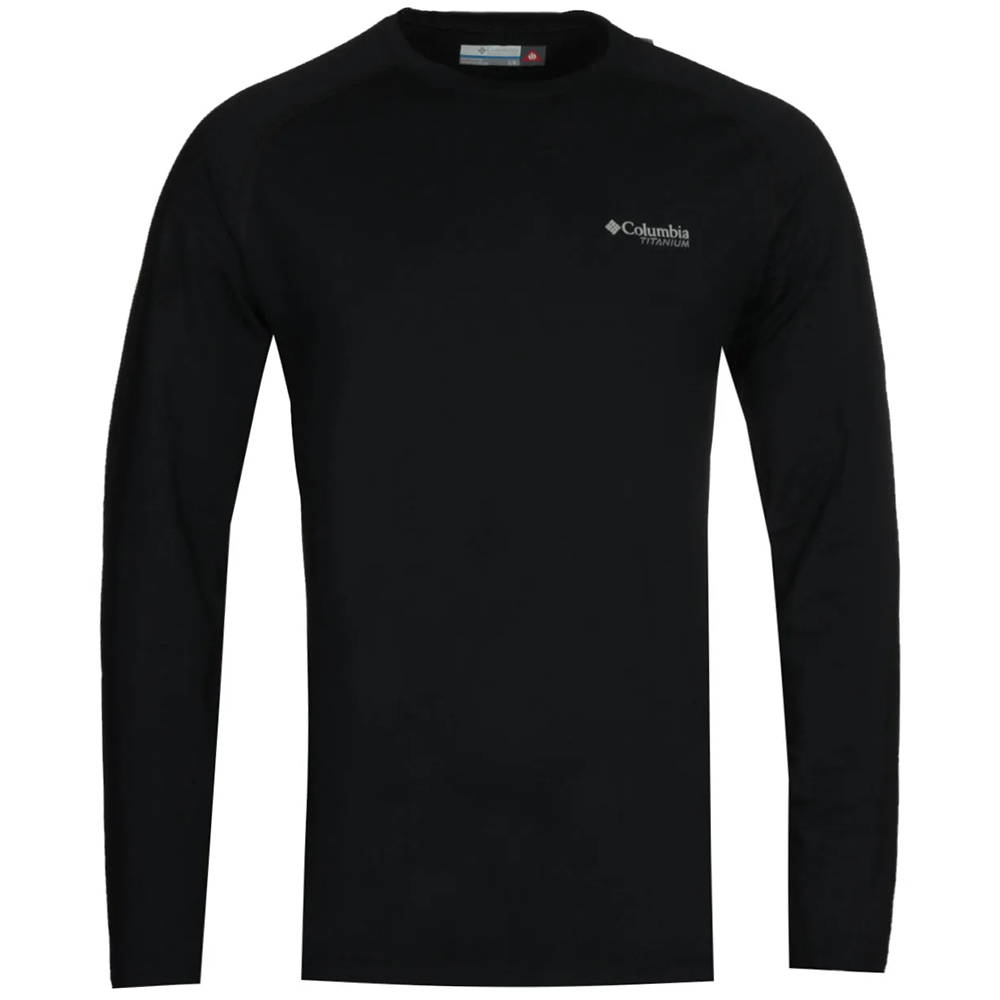
Using Columbia's trademark Omni-Heat technology, the Men's Omni-Heat 3D Knit Crew II uses soft fiber pods to create a gap between the garment and your skin, trapping body heat which the silver lining reflects back onto you.
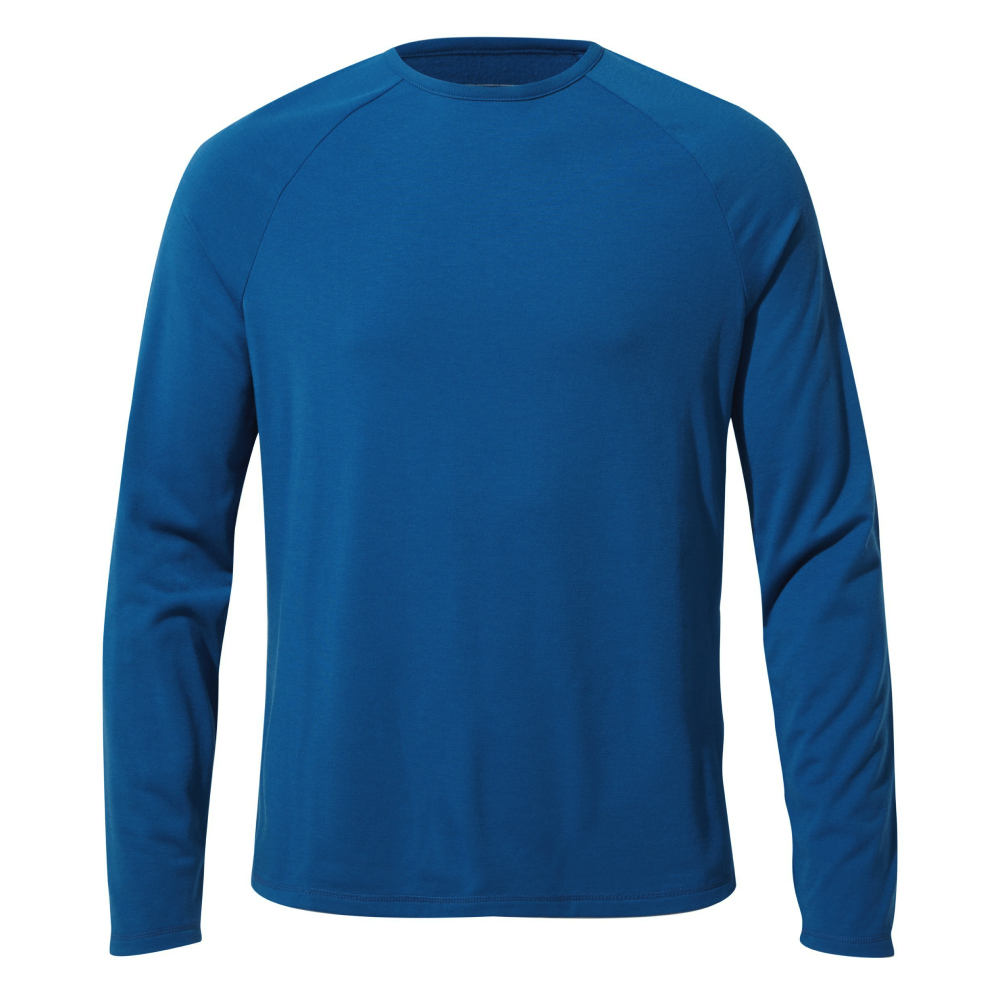
Each Craghoppers First Layer Long-Sleeved T-Shirt is made from 10 to 12 recycled plastic bottles, and keeps you warm for a low low price too.
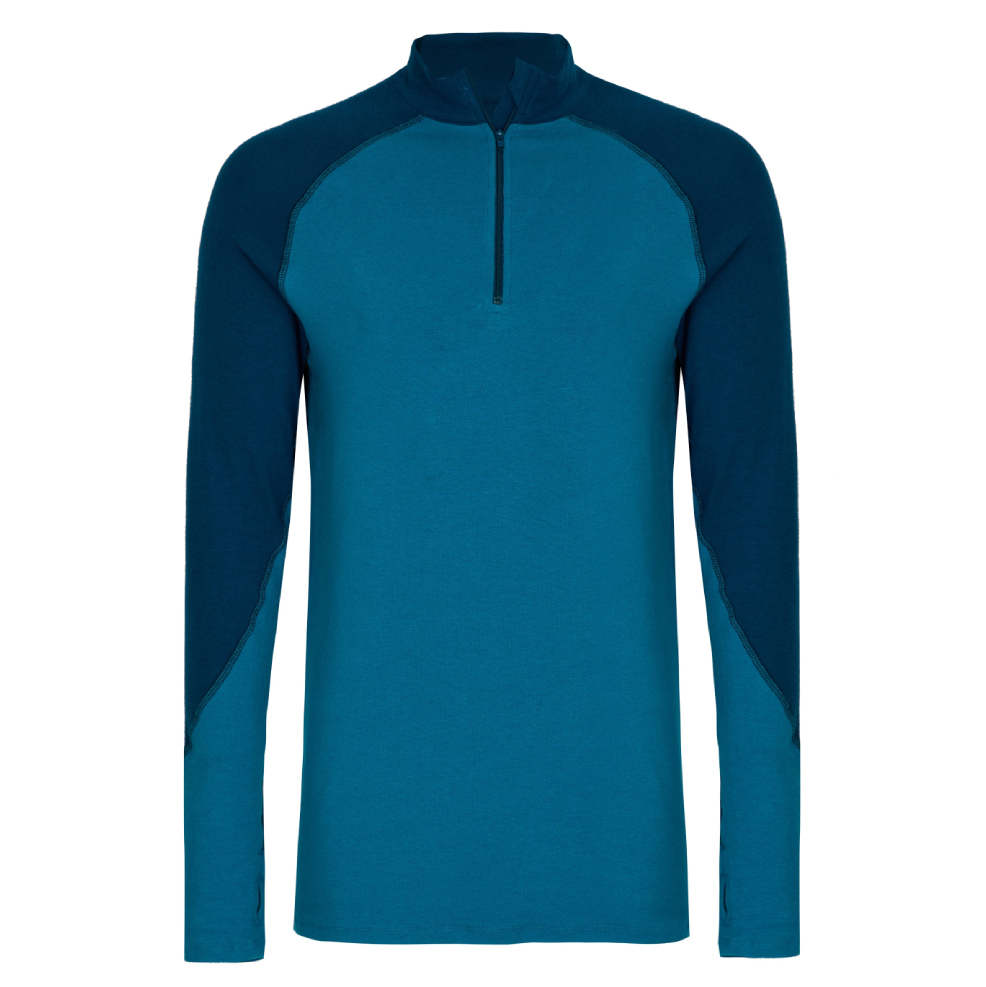
The bamboo-blend fabric of the Bam Zip-Neck Bamboo Base Layer is chafe-free and wonderfully comfortable against your skin, as well as being warm, breathable and odor-resistant
The best base layers we recommend in 2025
You can trust Advnture
The best base layer overall
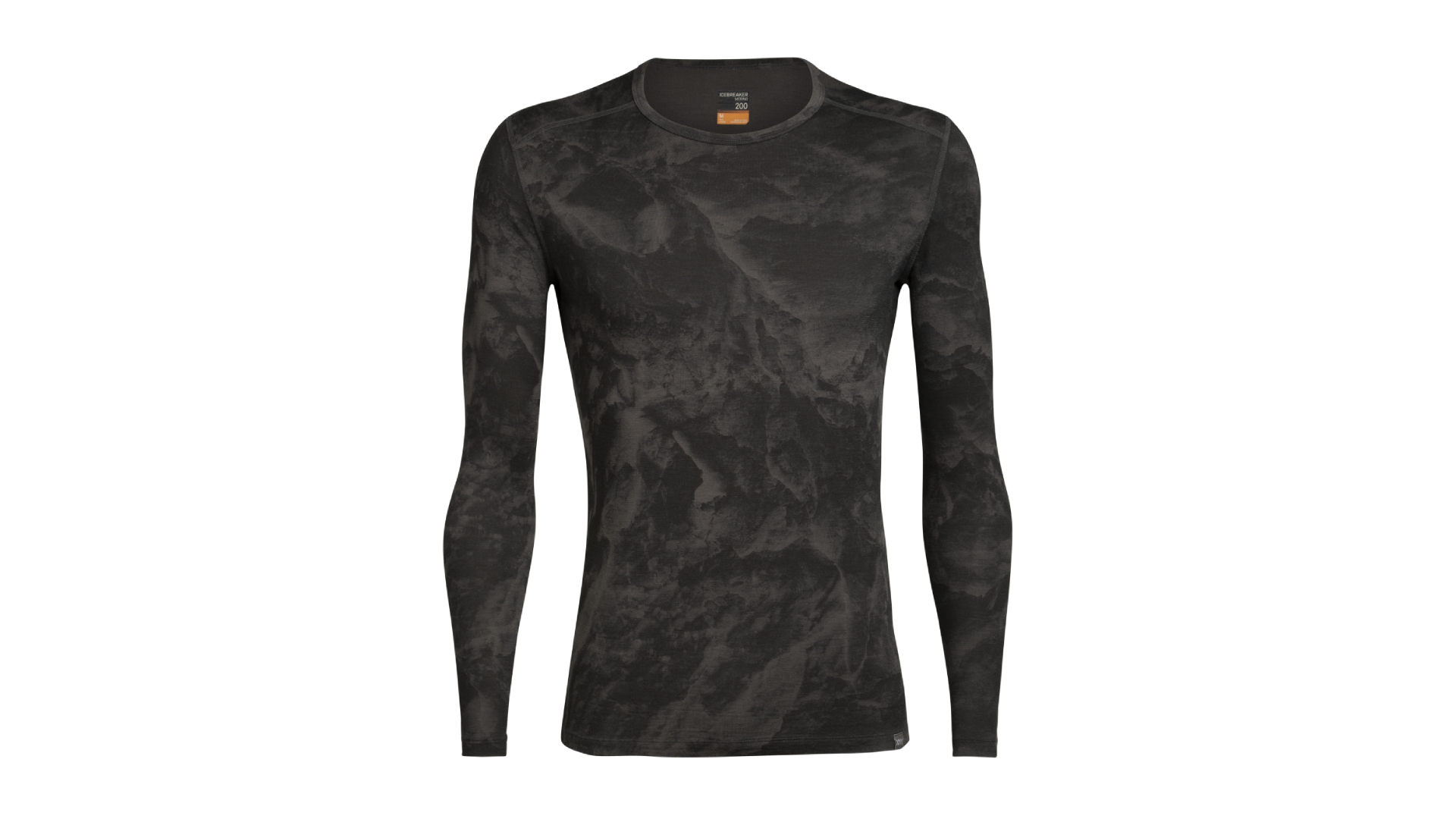
Specifications
Reasons to buy
Reasons to avoid
The Oasis – weighing in at 200 grams square meter (gsm) – is an ideal thickness for a base layer, and unsurprisingly is one of the company’s best selling garments. Made from 100% Merino wool, we found this top to be supremely comfortable. On test, it wicked moisture away with aplomb and maintained most of its thermal properties when wet. It's also naturally antimicrobial, and therefore odor-resistant.
It performed equally well for chilly trail running and trekking outings, and during a mid-winter sea paddle, though we would have appreciated thumb loops to keep the sleeves in lace.
As a natural material, Merino wool is biodegradable, and the dye used is plant-based and ethically sourced. Icebreaker has never been a bargain brand, and this isn’t a cheap top. The simple designs are cheaper, but for a little extra cash there are funkier prints available too.
Read our full Icebreaker 200 Oasis Long Sleeve Crewe Thermal Top review
The most stylish Merino base layer

Specifications
Reasons to buy
Reasons to avoid
The Artilect W-Flatiron 185 Crew tie-dye base layer (the men's version is the M-Flatiron) may be sold as ‘warmer’, but it is actually a very hot winter base layer. Designed with Nuyarn merino fabric, it exhibits all of merino’s natural properties, but these are amplified thanks to a twist-free fibre construction. On test, we found the cut to be long in the arms and high in the neck, with thumbholes that prevented the top riding up beneath mid layers and kept our wrists extra cosy.
The base layer top has gusseted underarms with breathable panels that extend from waist to wrist. Despite having several connected panels, the seams are all flatlock stitched, meaning there is no chafing and barely an awareness that the seam is there at all. It's definitely one of the most comfortable base layers we've tested.
The tie-dye color scheme is very distinctly Artilect and it’s refreshing to see more brands step away from the standard black base layer (even though that's something of a moot point when it's covered up under a fleece and jacket).
Read our full Artilect W-Flatiron 185 Crew Td Tie Dye base layer review
The best lightweight Merino base layer
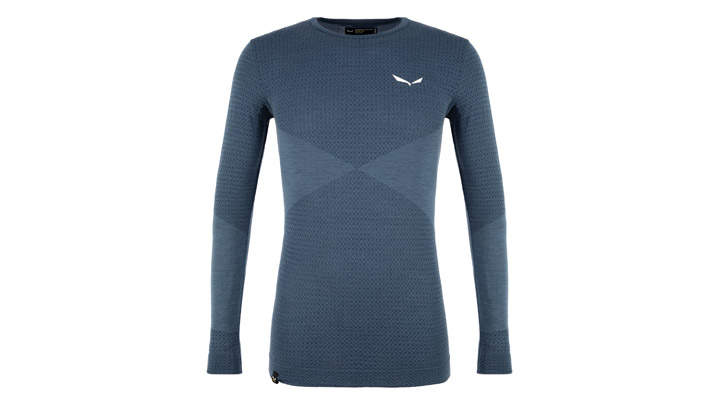
3. Salewa Zebru Responsive Long-Sleeve Top
Our expert review:
Specifications
Reasons to buy
Reasons to avoid
Named for Monte Zebrù in the Ortler Alps, this top is exceptionally light, but it punches well above its weight when it comes to performance. The majority-merino material offers everything that wool always brings to the party – breathable with excellent moisture-wicking capability, the ability to keep you warm when its cold and cool when it’s hot, natural odor resistance – but there is much more going on here.
The Zebru a figure-hugging bodymapped design, woven with ‘Responsive’ smart synthetic yarns including natural thermoreactive minerals that (according to Salewa) can absorb far-infrared radiation (FIR) from your body, and slowly release it back into muscle tissue, leading to better blood flow, improved oxygenation, longer-lasting warmth, enhanced performance and faster recovery.
This all sounds very impressive, even if it is impossible to monitor, but having tested this top on the trails, we can attest to its excellent performance. It's a tight-fitting base layer, but the four-way stretch material means you can move easily while wearing it, and the next-to-skin comfort levels are good, with flat-lock seams causing no rubbing or annoyance. It is also styled long, so it doesn’t ride up your back, but disappointingly it lacks thumb hoops.
The best hybrid base layer overall
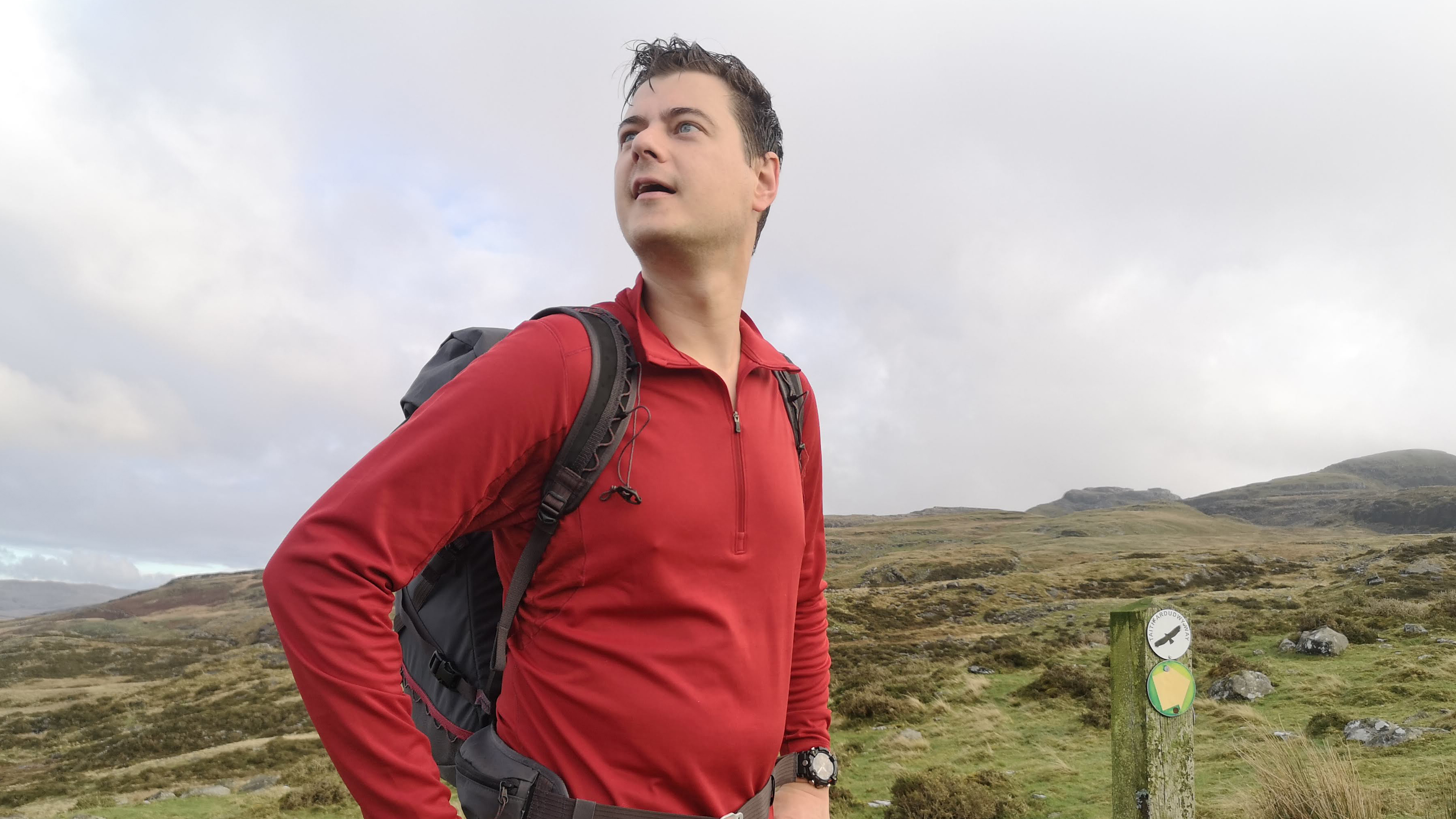
Specifications
Reasons to buy
Reasons to avoid
With the Rho Hybrid, Arc’teryx have attempted to give you the best of both worlds offered by natural and synthetic fibres. The main fabric is their Phasic AR II, a midweight polyester that has been treated with silver ions to neutralise body odor, but there are also zoned panels under the arms made from a blend of natural merino wool and hard-wearing nylon. We discovered that the result is a hybrid design that does its job really well – a top that supplies great wicking performance, comfort and warmth, without any unpleasant odor.
It also happens to have one of the best fits of any long-sleeved technical tee we’ve tested. It has plenty of length in the arms and torso, plus a stand-up collar that does a great job of preventing chills from creeping down your neck. The cut is trim enough to feel cosy without being skin-tight, unlike a lot of other compression-style winter layers out there. The deep neck zip is a great way to dump a little extra heat if you’re working hard uphill too. The fabric is soft and comfortable, with very thin, flatlock seams to avoid irritation.
It’s tempting to go cheap on your base layers – after all, they’re not generally the most exciting bits of kit. But we think a top-quality technical layer like this one is well worth it.
Read our full Arc’teryx Hybrid Half Zip base layer review
The best hybrid base layer for warmth
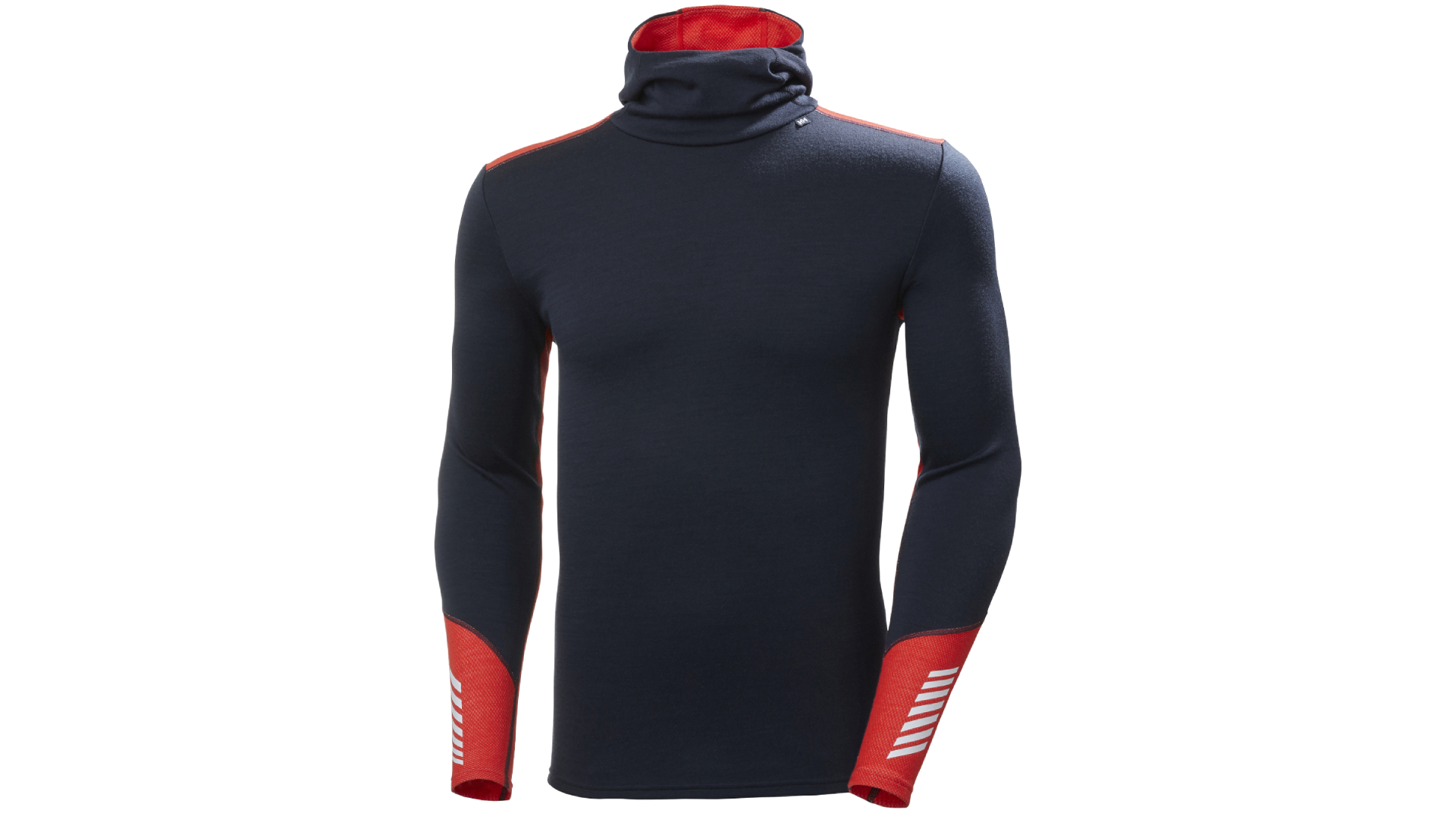
Specifications
Reasons to buy
Reasons to avoid
Helly Hansen pretty much pioneered the concept of technical, high-performing base layers and they remain industry leaders when it comes to making good stuff that will keep you alive in challenging conditions, as the double-layer Lifa Merino Hoodie perfectly illustrates. ‘Lifa’ is the brand’s own high-performing polypropylene yarn, which is used in almost equal measure here with merino wool. On test, we found that both fabrics excel at doing all the things we'd want a base layer to do – they wick moisture away from the body and have excellent thermal qualities even when wet – but each also brings its own tricks to the party.
The merino brings with it natural antibacterial and anti-odor properties, while the Lifa is more hard-wearing and helps keep the top in shape. A really comfortable top, with flat seams, this is the only base layer on test that had a hoodie, which people will either love or hate. If you’re out and about in seriously cold conditions, your ears are going to love it – it fits under climbing or bike helmet no problem, and really adds to the protection level of the top, making it suitable for high level epics on serious mountains. If you’re adventuring at a more modest level, this is still a lovely top, but you might find it a little too substantial to wear as a base layer.
Read our full Helly Hansen Lifa Merino Mid-weight Hoodie review
The best hybrid base layer for breathability

Specifications
Reasons to buy
Reasons to avoid
Combining strict ethical production standards and technical functionality is a hard task, but the Smartwool Women’s Merino Sport Long Sleeve Top delivers on both fronts. Proudly boasting ZQ certification, not only does it feel good from a consumer perspective but the top also performance perfectly.
The Merino Sport Long Sleeve top’s Tencel Lyocell fibres are comprised of composite recycled cellulose, making the garment, lightweight and super comfortable for a range of different active sports. Temperature regulation, odour resistance, and moisture management are all key features why many people opt for merino – but with this top users don’t suffer with the ‘damp wool top feeling’ that you can sometimes experience with the material, thanks to this high-performing, recycled cellulose fibre. On test, we found it feels nice against the skin, helps minimise awkward sweat patches and makes the garment ideal for wear in-between temperature fluctuations. This is a product for all seasons.
Our tester felt the sizing was somewhat generous, with extra room on the waist and arm length; she reports that a small felt more like a size 12 – so this is worth bearing in mind if you’re after a more fitted top.
Read our full Smartwool Women’s Merino Sport Long Sleeve top review
The best value hybrid base layer
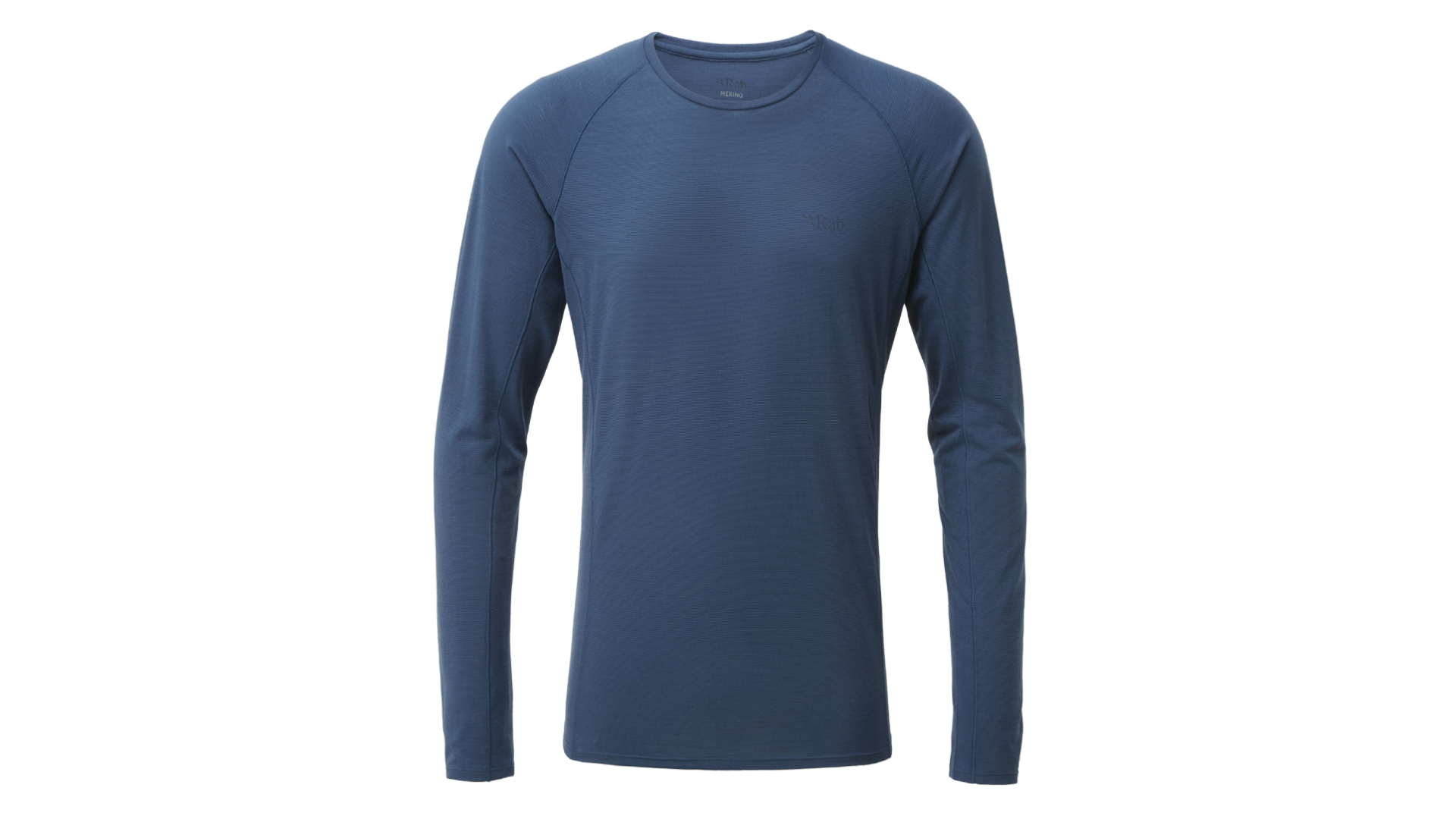
7. Rab Forge Long-sleeved Tee
Our expert review:
Specifications
Reasons to buy
Reasons to avoid
Made from a magical mix of merino and manmade polyester (32% of which is recycled), this simple-looking top is a lightweight, high-performing base layer that did everything we could have asked it for during the test period. The athletic-fit Forge kept us warm (even when wet), dried quickly, wicked moisture, refused to stink even after extended wear and kept its shape.
It will serve you well out on the trails all winter, worn as an active undergarment, but at this weight, it’s one of those pieces of kit that’s well worth stashing in a backpack (or even a hydration pack) all year round, in case a change of conditions catches you out and you find yourself in need of an extra layer. The only thing it is missing is thumb hoops, to stop the top riding up your arm when you pull on another layer.
The best synthetic base layer overall
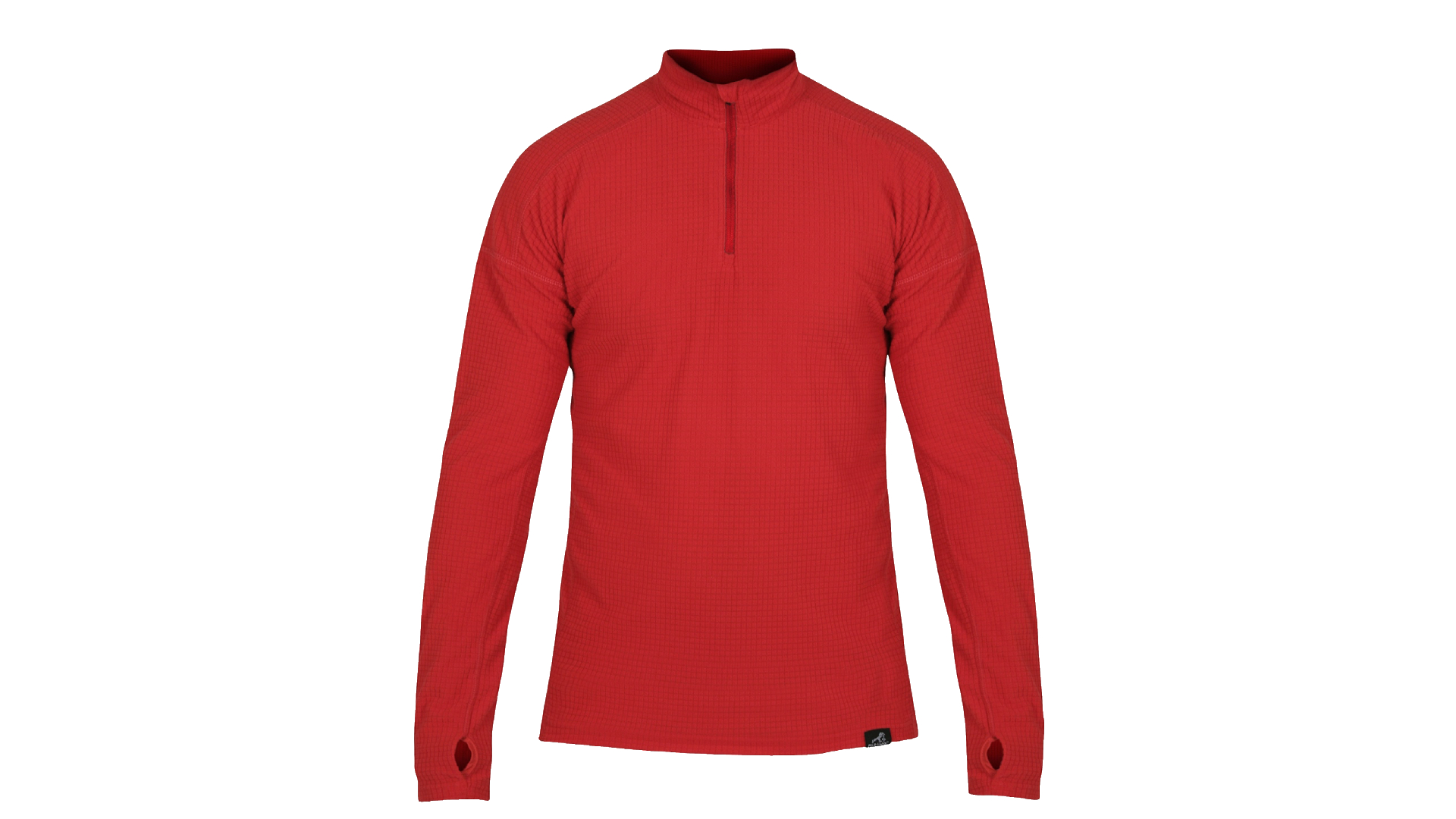
Specifications
Reasons to buy
Reasons to avoid
The polyester-based Parameta G material used to make this well-thought-through top features an ingenious raised-grid pattern that, when another layer is added on top, traps air between the squares. This air then becomes warmed by your body heat, providing a layer of thermal insulation. Clever. On test, if we ever got too hot, we could quickly release this air by taking off (or just unzipping) a mid layer or outer layer. Alternatively, in warmer conditions or during high intensity activity, the Grid Technic can be worn on its own, when it works as a standard poly top, providing decent levels of warmth (even when wet) and excellent moisture wicking properties.
The Grid Technic has a high neck to keep your throat warm, which features a mid-length zip (with a good chin protector), so you can let cool air in when needed. It also has thumb hoops, so the base layer won’t ride up your arm when you pull another layer over the top, and your wrist won’t become exposed between the top and your glove. You shouldn’t suffer a chilly lower back, either, even when wearing a backpack, as the top is longer at the rear. The athletic cut means it fits closely (no annoying excess material flapping around) and the next-to-skin comfort is good, if not quite as luxurious as merino. As with the vast majority of Páramo garments, this top is made ethically in Colombia with the Miquelina Foundation, a member of the World Fair Trade Organization, and it is fully recyclable through Páramo.
Read our full Páramo Grid Technic base layer review
The best recycled synthetic base layer
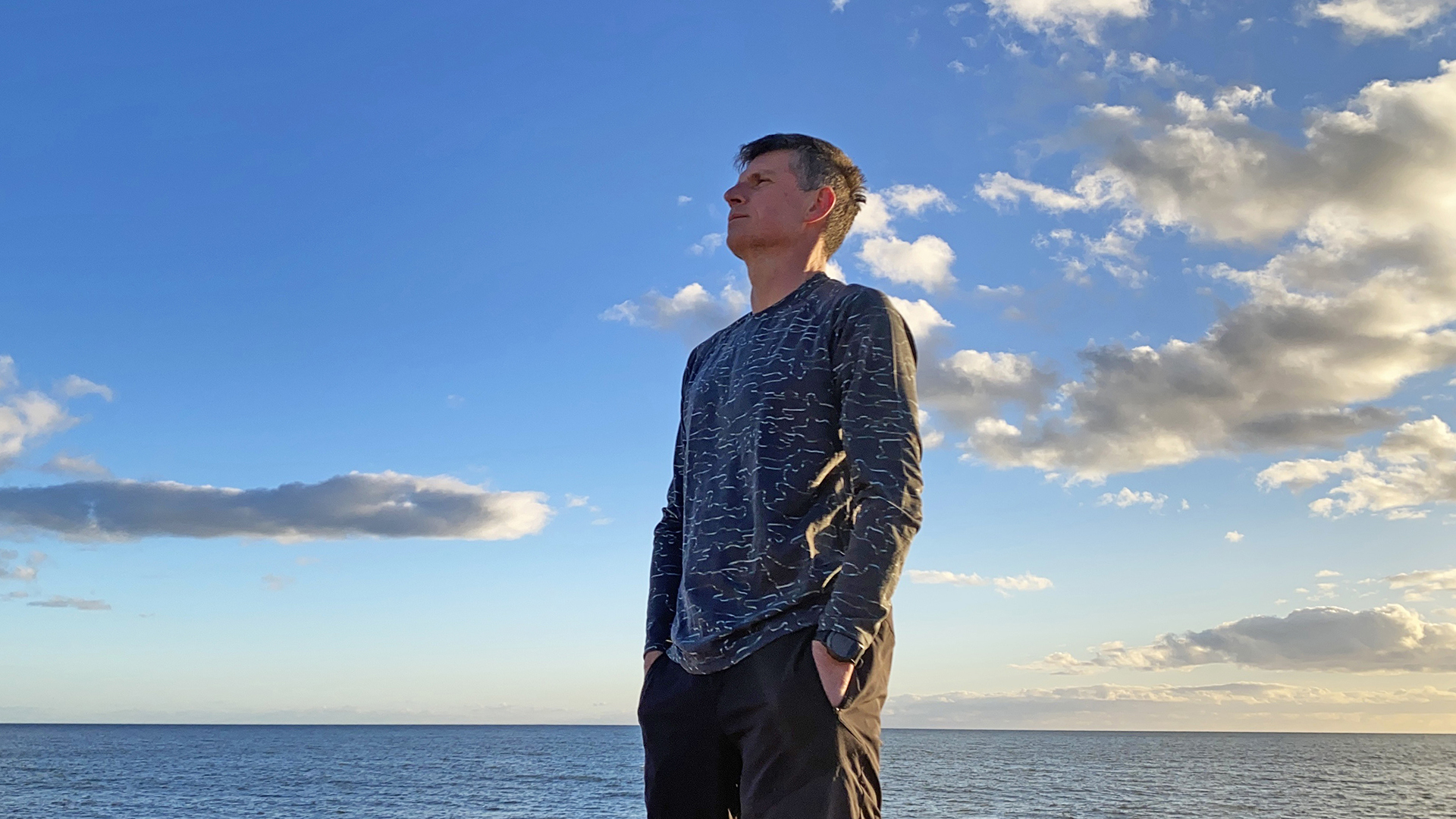
Specifications
Reasons to buy
Reasons to avoid
Produced by US brand Saxx, which specialises in making men’s underwear that provides comfort during active pursuits, the Roast Master long-sleeved top is a midweight base layer designed for cool weather use by hikers, bikers, runners, skiers, boarders, paddlers, climbers and campers. The material mix is predominantly recycled synthetics, combined with Tencel lyocell, an eco-friendly fabric where the fibre content is derived from sustainable wood, and elastane is also used to provide some stretch, so the top won’t inhibit your movements on the hillside, mountain top, water or crag.
Our tester reported that: "While I never felt my movement was impacted or restricted by the top, the degree of stretch is not as pronounced as in some base layers I’ve tested… [and] despite Saxx saying it’s a slimfit garment, I found the Roast Master to be slightly over-generously sized." So, if you prefer a body clinging base layer, choose a size smaller than usual. The material is breathable, wicks moisture away from your skin, will continue to work and provide thermal protection even when damp, and it dries extremely quickly. Saxx says this garment has been treated with an anti-stink product, but only time will tell if this works. The flat seams and soft-finish inner make it exceptionally comfortable to wear, and it should last for many seasons. Our main criticism of this top, beside the sizing issue, is the lack of thumb loops.
The best synthetic base layer for dynamic movement
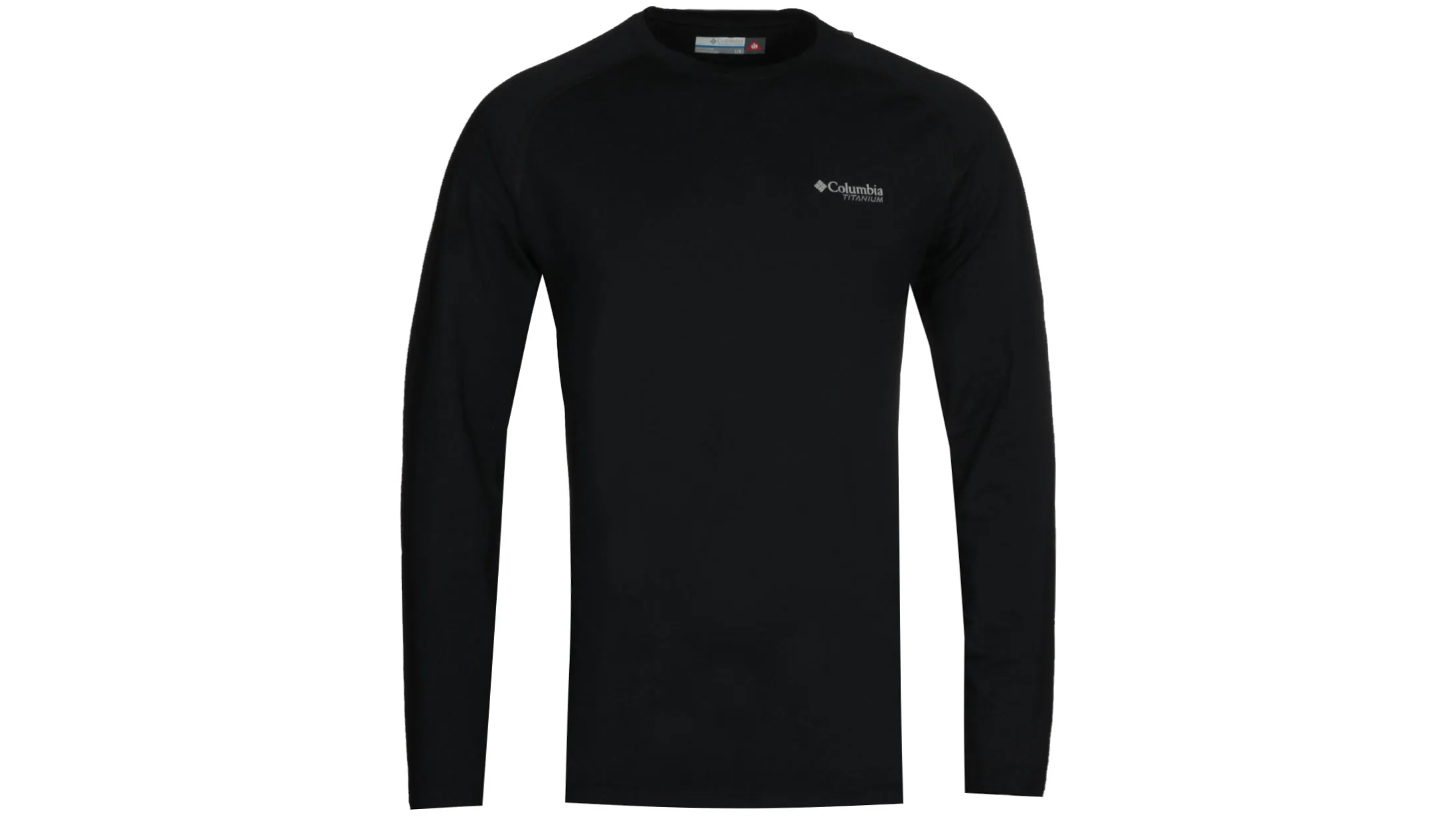
Specifications
Reasons to buy
Reasons to avoid
Although it has a pretty pedestrian appearance when being worn, if you turn this top inside out, it looks almost metallic, and resembles something you might see worn on the bridge of the starship Enterprise. As with everything they make these days, Columbia have employed their trademark Omni-Heat technology in this base layer, in a bid to keep the wearer warmer than any other brand. The Omni-Heat concept involves the use of loads of soft fiber pods, which create a little gap between the garment being worn, and your skin – your body heat then warms the air trapped inside this space, and the silver lining of the top reflects this heated air back at you. Genius.
In addition, because there’s a space between your body and the base layer, less moisture builds up, and the poly fabric of the top wicks sweat away too. This all sounds impressive, but it does actually work too – in fact, it worked so well on test that we could often feel pretty hot in this top, although shedding an outer layer generally sorts that out. If you’re heading somewhere seriously cold – like a mountain top, or a ski resort – this is a great option.
Read our full Columbia Omni-Heat 3D Knit Crew II base layer shirt review
The best sustainably-made synthetic base layer
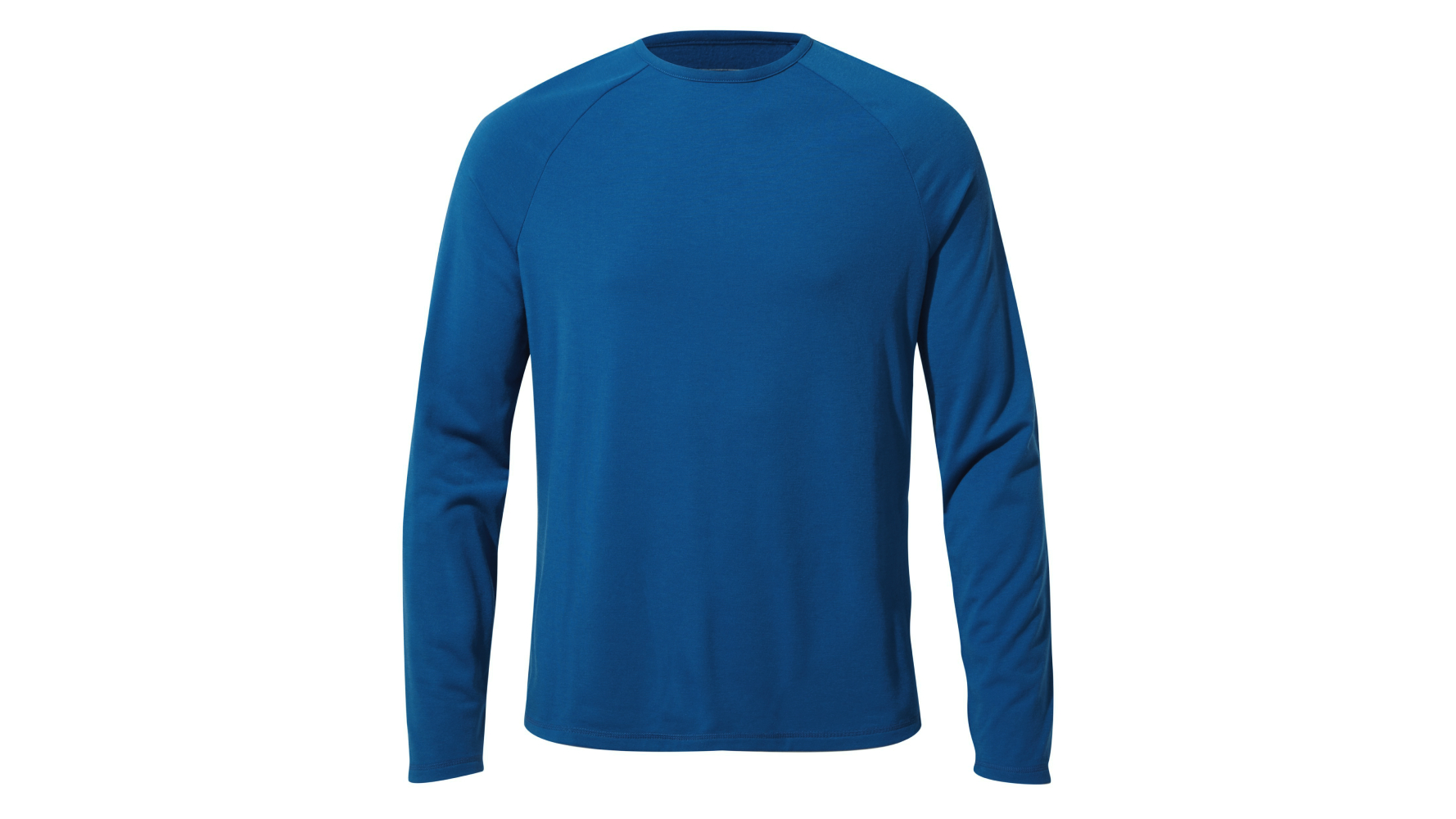
11. Craghoppers First Layer Long-Sleeved T-Shirt
Our expert review:
Specifications
Reasons to buy
Reasons to avoid
At first glance, this thermal top looks fairly basic – it’s here to do a job for a fair price with no bells and whistles, true enough – but there’s more of a backstory to these base layers, because they are made from recycled plastic. Around 10 to 12 discarded bottles go into each garment, and while we know microfibres still get released every time synthetic tops are washed, it’s certainly better to buy something recycled. Craghoppers’ sustainability policies are solid, and the brand also guarantee their garments for life (as in, the clothes expected lifespan), and will take used garments back to recycle them once they’ve been worn out.
A relatively thick top, we found its performance levels were excellent: in our tests it kept us warm, wicked moisture away, and absorbed very little water, letting it keep its warmth-giving capabilities even when wet. On the down side, it lacks thumb hoops, but it is available in a short-sleeve iteration, for year-round use.
Best base layers comparison table
Base layer | List price | Weight | Materials | Compatibility |
Icebreaker 200 Oasis Long Sleeve Crewe Thermal | $95–$110 (US) / £75–£100 (UK) | 263g/9.3oz | Merino wool | Hiking, biking, trail running, climbing, alpine adventures |
Artilect W-Flatiron 185 Crew Td Tie Dye | $150 (US) / £110 (UK) / €130 (EU) | 185 GSM | Nuyarn (Australian merino wool) | Snow and mountain adventures |
Salewa Zebru Responsive Long-sleeve Top | £80 (UK) | 170g / 6oz | Alpine wool (83%) and manmade poly | Hiking, biking, trail running, climbing, alpine adventures |
Arc’teryx Rho Hybrid Half Zip Baselayer | $125 (US)/ £95 (UK) | 170g / 6oz | Main fabric: Phasic AR II (100% polyester with DAO finish), Zoned panels: Nucliex 150 (87% Wool, 13% Nylon, RWS wool) | Winter hiking in the hills and peaks |
Helly Hansen Lifa Merino Mid-weight Hoodie | $120 (US) / £90 (UK) | 330g/11.6oz | Merino wool and Lifa (polypropylene yarn) | Winter hill hiking, skiing and alpine adventures |
Smartwool Women’s Merino Sport Long Sleeve top | $90 (US) / £85 (UK) | Women’s: 110g / 3.88oz; Men’s: 138g / 4.86oz | Merino wool (53%), Tencel Lyocell (47%) | Hiking, backpacking, mountaineering, trail running, snow sports and yoga |
Rab Forge Long-sleeve Tee | £50 (UK) | 178g/6.3oz | Merino wool (47%) and polyester (53%) | Hiking, biking, trail running, climbing, alpine adventures |
Paramo Grid Technic base layer | £75 (UK) / €100 (EU) | 238g/8.4oz | Parameta G (polyester) | Hiking, biking, trail running, climbing, alpine adventures |
Saxx Roast Master Mid-Weight Long Sleeve | $75 (US) / £65 (UK) | Men’s large: 221g / 8oz | Recycled polyester (87%), Tencel lyocell (9%) and elastane (4%) | Hiking, trekking, backpacking, mountaineering, trail running, snow sports and camping |
Columbia Omni-Heat 3D Knit Crew II base layer shirt | $85 (US) / £70 (UK) | 232g/8.2oz | Polyester (85%) and elastane (15%) | Skiing, snow-boarding, alpine adventures and cold-weather hiking, biking and trail running |
Craghoppers First Layer Long-Sleeved T-Shirt | £35 (UK) | 230g / 8.1oz | Recycled polyester (77%) and viscose (23%) | Hiking, biking, trail running, climbing, alpine adventures |
How we test base layers
Our reviewers test base layers in a range of environments and conditions, from wintry hills and peaks to warm hikes along the coast, mixing day hikes and longer expeditions. Features (including breathability, odor-resistance, ventilation, materials, style, weight and overall comfort) are tested against claims made by the brand, and we assess factors such as value for money, durability, functionality and environmental impact.
Meet the testers
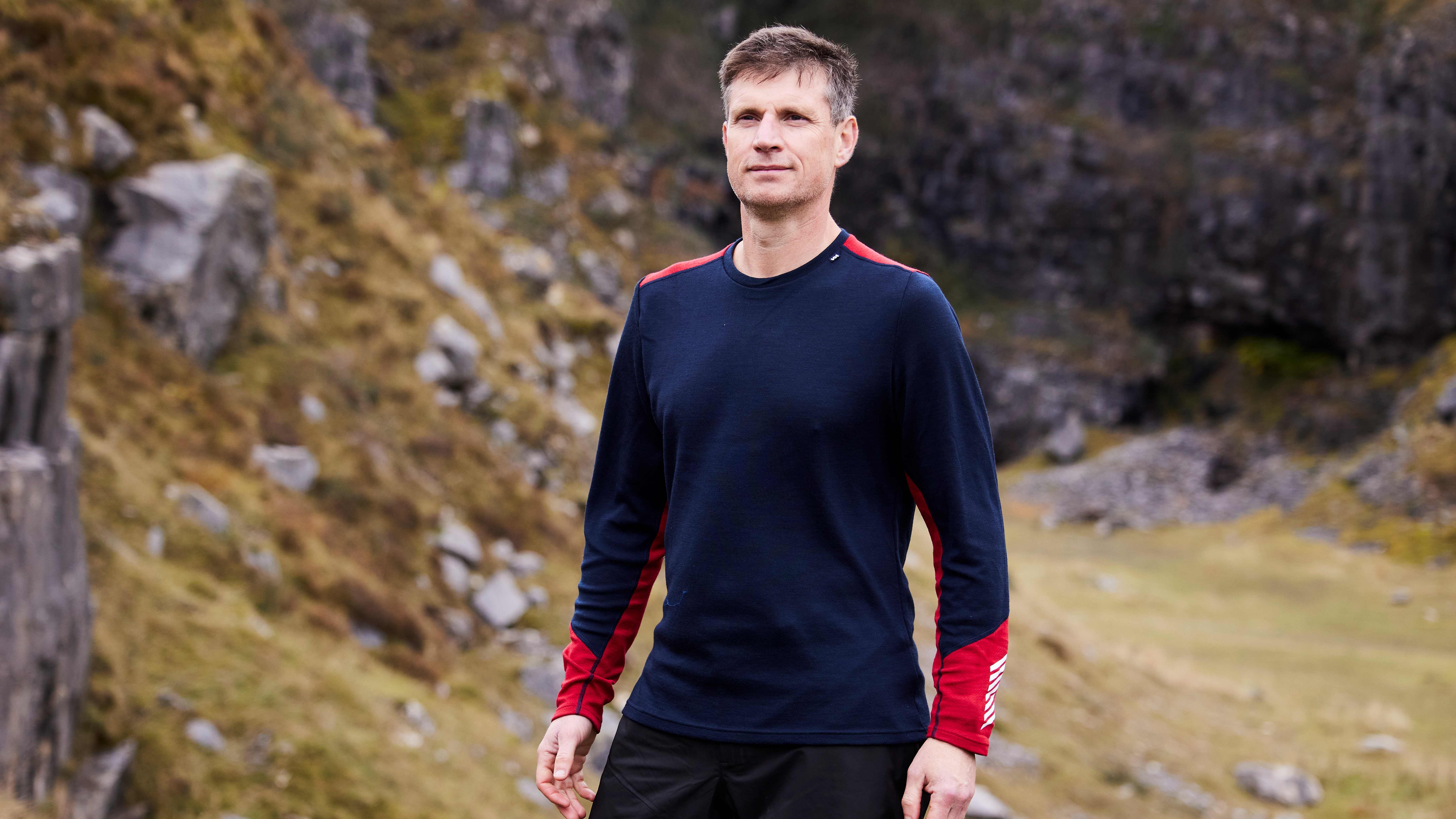
Writer, editor and enthusiast of anything involving boots, bikes, boats, beers and bruises, Pat has spent 20 years pursuing adventure stories. En route he’s canoed Canada’s Yukon River, climbed Mont Blanc and Kilimanjaro, skied and mountain biked through the Norwegian Alps, run an ultra across the roof of Mauritius, and set short-lived records for trail-running Australia’s highest peaks and New Zealand’s Great Walks. He’s authored walking guides to Devon and Dorset, and once wrote a whole book about Toilets for Lonely Planet. Follow Pat’s escapades here.
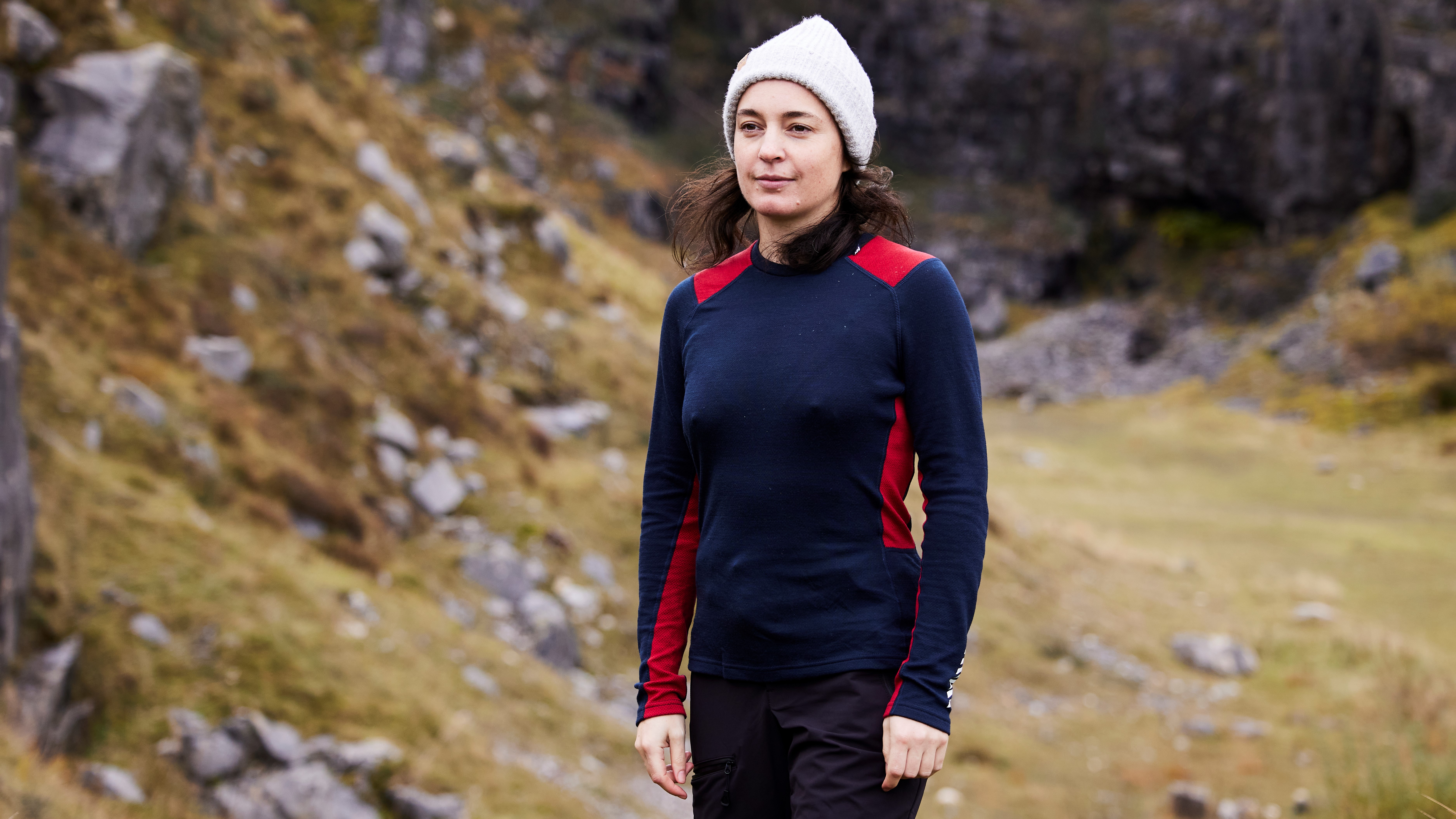
Julia is an author, mountain enthusiast and yoga teacher who loves heading uphill on foot, ski, bike and belay. She recently returned to her hometown of Glasgow, Scotland after 20 years living in the USA, 11 of which were spent in the rocky mountains of Vail, Colorado where she owned a boutique yoga studio and explored the west's famous peaks and rivers. She is a champion for enjoying the outdoors sustainably as well as maintaining balance through rest and meditation, which she explores in her book Restorative Yoga for Beginners, a beginner's path to healing with deep relaxation. She enjoys writing about the outdoors, yoga, wellness and travel.
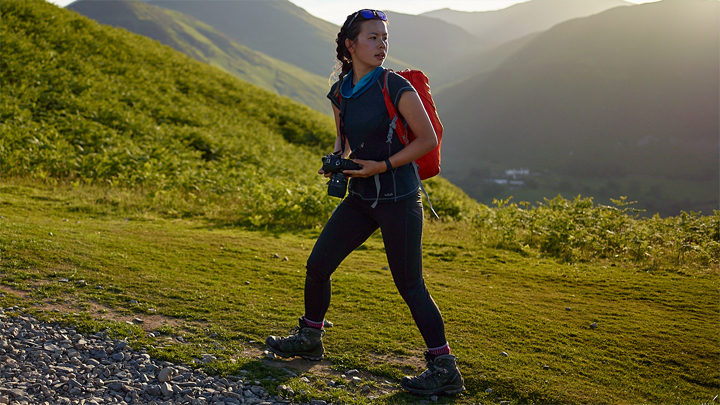
A former brand ambassador for Merrell and current Ordnance Survey #GetOutside Champion, Jessie Leong’s lifelong outdoor odyssey began with Duke of Edinburgh’s Award walks in the Peak District. This segued into long hill hikes in the Yorkshire Dales, multi-day treks in the Lake District, scrambles in North Wales and adventures scaling alpine pinnacles. When not walking, she can be found rock climbing, wild swimming, cycling, photographing, filmmaking, writing and modelling. Jessie’s most recent claim to fame is playing a Miss World contestant in the 2020 feature film Misbehaviour.

An outdoors writer and editor, Matt Jones has been testing kit in the field for nearly a decade. Having worked for both the Ramblers and the Scouts, he knows one or two things about walking and camping, and loves all things adventure, particularly long-distance backpacking, wild camping and climbing mountains – especially in Wales. He’s based in Snowdonia and last year thru-hiked the Cambrian Way, which runs for 298 miles from Cardiff to Conwy, with a total ascent of 73,700 feet – that’s nearly 2½ times the height of Everest. Follow Matt on Instagram and Twitter.
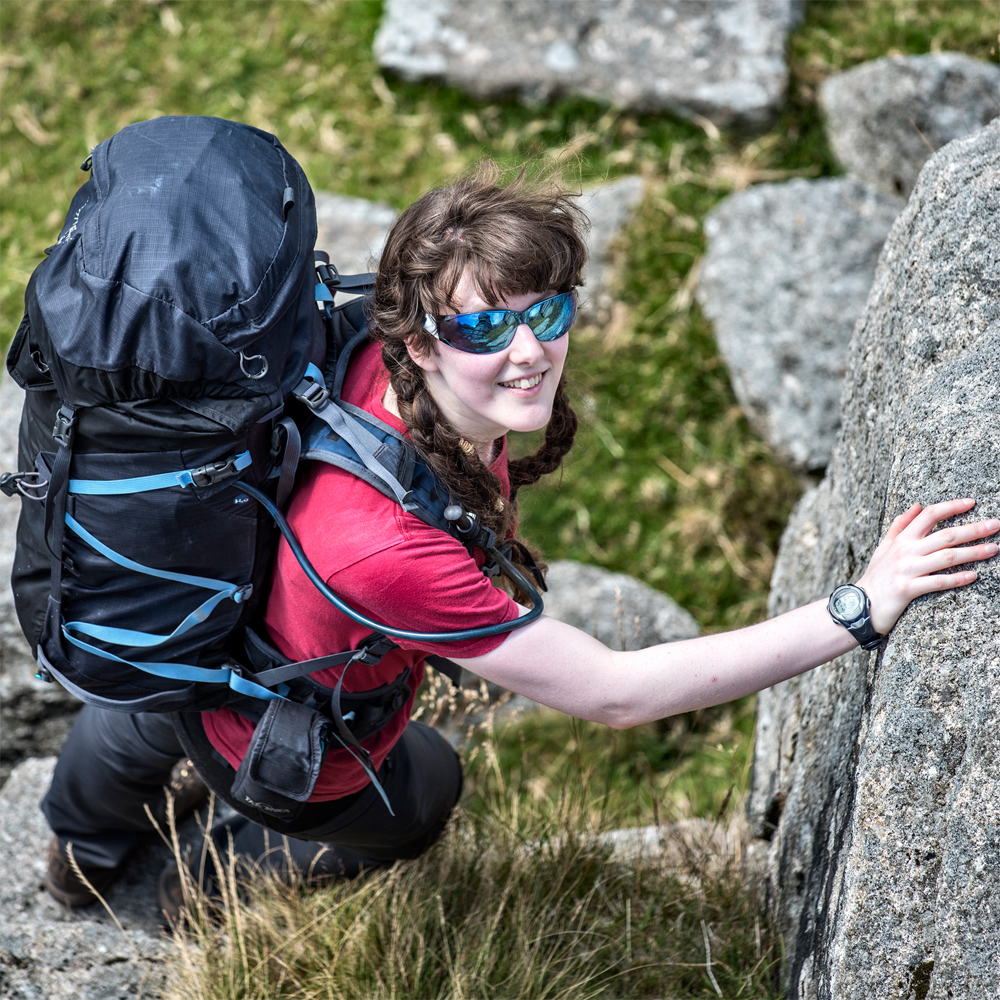
An adventure writer based on Dartmoor, England, Emily is an active member of Mountain Rescue and a summer Mountain Leader, but loves all things adventure – before her third birthday she had lived on three continents. Founder of Intrepid magazine, she works to help break stereotypes about women in the outdoors. Her expeditions have included walking all Dartmoor’s 119 tors in a single two-week outing, cycling to Switzerland and back, and riding the Rhine from source to sea.
How to choose the best base layer

While there are myriad styles to choose from, the best base layers are there to do one job well: keep the wearer warm and safe. Additional features will add comfort and functionality, but the thermal properties are the most important factor. The following are some things to consider.
Thermal insulation
The best base layers work by trapping air, which is then warmed up by your body heat to provide a thermal layer. For this to work well, the garment must be made from a material that holds on to air well, but gets rid of water quickly.
Materials
Natural fabrics – especially merino wool, but also bamboo – work very well in the best base layers, but you’ll often see manmade materials like polyester and Lycra employed in the mix, and these can help make the garment closefitting (as a base layer should be), maintain its shape, add to its durability and improve the all-important thermal performance, especially if it gets wet.
Merino wool is a magic material that keeps you warm when you need it to, but can also cool you down when outside conditions are hot. It also wicks moisture away from your body, feels comfortable and boasts antibacterial properties, which stop tops from getting too smelly. Garments with a high percentage of cotton should be avoided, as cotton holds onto water and performs terribly when wet, losing all its thermal properties and keeping you cold.
Comfort
Next-to-skin comfort is very important in a base layer, for obvious reasons. Most people find merino wool extremely comfy, but others prefer bamboo, or synthetics such as brushed fleece. This is subjective, but worth getting right, otherwise you’ll spend all your time itching. Tops with flat-lock seams will be more comfortable to wear.
Fit
Ideally, the best base layers need to hug you tight. You don’t want the back of the sleeves riding up to expose bare skin to the cold, and a top that wrinkles under another layer won’t be comfortable.
Features
Lightweight base layers are less likely to have them, but in a more substantial base layer, a partial-length zips is an excellent feature, allowing you to dump excess heat during activities. We like thumb loops too, which stop sleeves from riding up when you put on another layer, and prevent gaps appearing between your top and your gloves.
Moisture management
While outer layers have to cope with mist, rain and snow, base layers must deal with sweat, so they need to be breathable and have the ability to wick moisture away from your body.

Weight
Base layers are often ascribed a weight (for example, ‘midweight’), which relates to the thickness of the piece of clothing in question. Obviously, the higher the weighting, the warmer the garment will be. It’s definitely possible to have a base layer that’s too hot, so go with an option that best suits the type of outdoor activity you do most often, in the kind of conditions you’re most likely to be out doing it in.
Durability
While merino wool is one of the best base layer materials, it does only last so long and it can lose its shape, which is why many brands use a mix of wool and hardier synthetic fabrics.
Environmental concerns
As always, the most sustainable clothes are the ones you’ve already got, but if you do need to invest in a new base layer, look for garments woven from natural, biodegradable materials (wool, bamboo) or recycled synthetics, made with natural dyes by brands with good environmental principles and robust manufacturing ethics.
Our guide to the most eco-friendly outdoor brands will point you in the right direction.
All the latest inspiration, tips and guides to help you plan your next Advnture!

Author of Caving, Canyoning, Coasteering…, a recently released book about all kinds of outdoor adventures around Britain, Pat has spent 20 years pursuing stories involving boots, bikes, boats, beers and bruises. En route he’s canoed Canada’s Yukon River, climbed Mont Blanc and Kilimanjaro, skied and mountain biked through the Norwegian Alps, run an ultra across the roof of Mauritius, and set short-lived records for trail-running Australia’s highest peaks and New Zealand’s Great Walks. He’s authored walking guides to Devon and Dorset, and once wrote a whole book about Toilets for Lonely Planet. Follow Pat’s escapades on Strava here and Instagram here.
